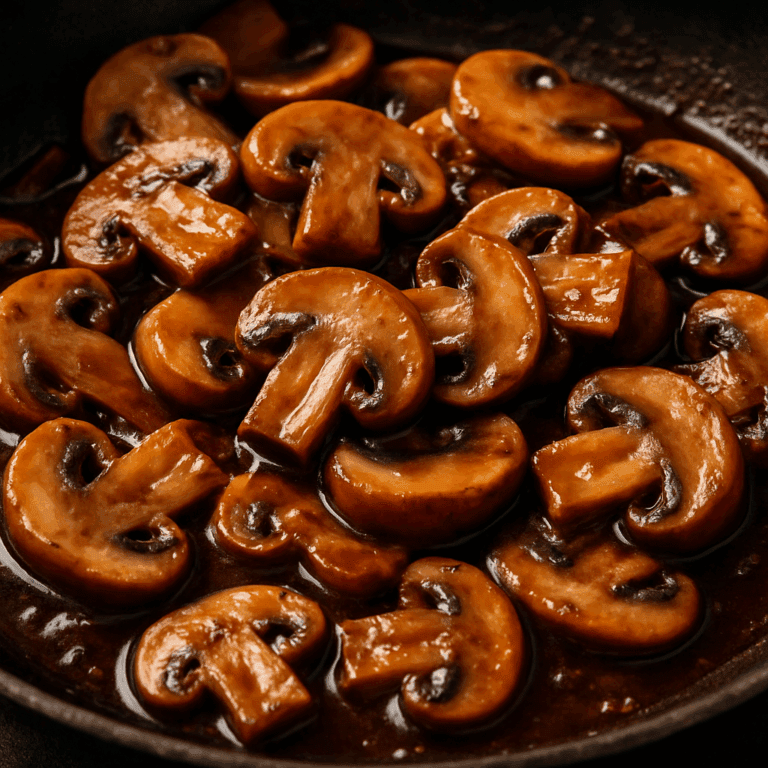You know that moment when your kids devour dinner and ask, “Mom, how’d you make this taste so good?” That’s the magic of deglazing a pan, y’all! I’m Chef Samantha George, and this is part of my series on How to Make Food Taste Better at Home, where I show you how to turn weeknight meals into flavor bombs.
Let me tell you about the day I decided to start deglazing my pan—and turned what could’ve been a dry, boring chicken dinner into something juicy, glossy, and downright restaurant-worthy. I was rushing (because of course I was), trying to stretch two chicken thighs into something special for my boys. I seared them in a cast iron skillet, and when I pulled them out, I didn’t ignore those gorgeous brown bits stuck to the pan. Now, past me would’ve scrubbed that away. But instead, I tossed in a splash of white wine and scraped with my wooden spoon… and just like that, dinner leveled up.
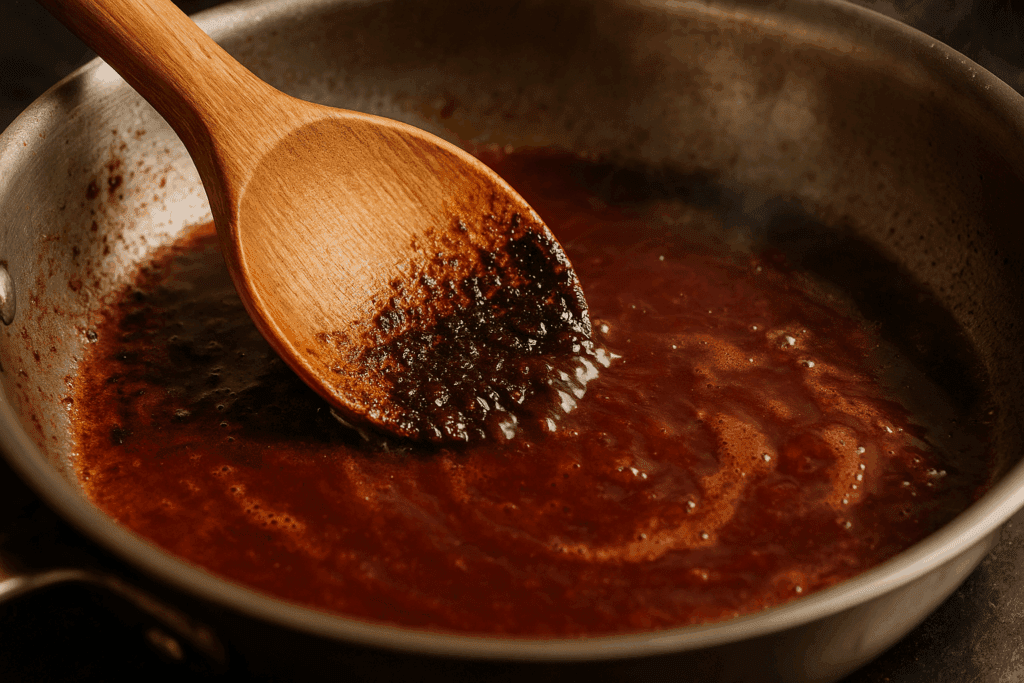
What Is Deglazing and Why It’s a Flavor Bomb
So, what is deglazing? It’s the art of using a liquid—like wine, broth, or vinegar—to lift those golden-brown caramelized bits, called fond, stuck to your pan after cooking. So we’re learning a new word today – FOND! These bits are pure flavor gold, created through the caramelization in cooking process. What does deglazing do? It transforms those bits into a rich, restaurant-worthy sauce that’s bursting with flavor balance.
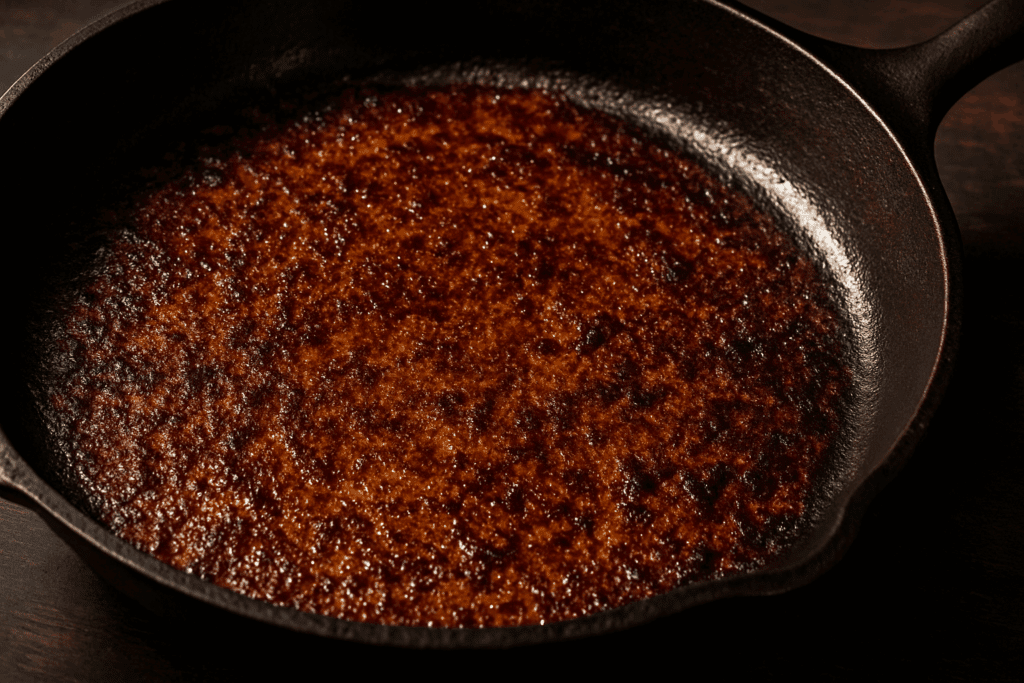
Wait until the caramelization has happened
How does deglazing work? Scientifically, it dissolves the Maillard reaction’s savory compounds—those complex flavors formed when proteins and sugars brown. Think it’s like the brown crust of bread or a hot pudding, the brown caramelised part are the best parts flavour wise. All that toasty flavour is actually stuck to the bottom of your pan. Why is deglazing important? It delivers juicy, boosted umami in cooking, and a golden-glazed finish that makes every bite unforgettable. Trust me, this is kitchen confidence in action!
The Best Deglazing Liquids to Use
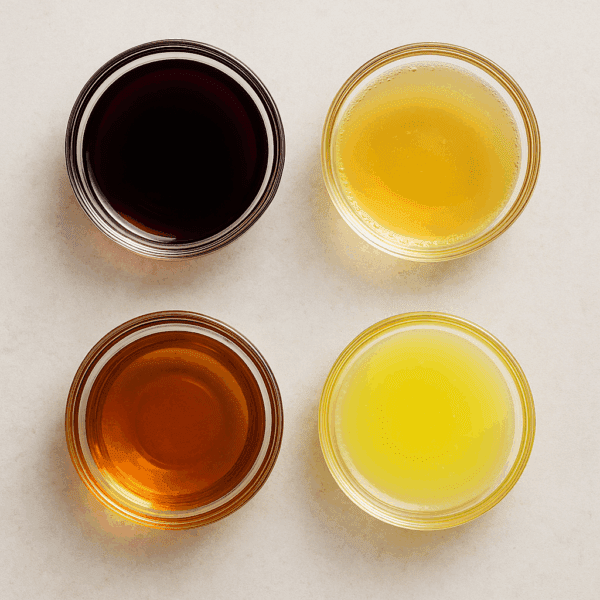
Now, if you’re asking, “What can I deglaze with?” the answer is—more than you think! The liquid does the heavy lifting here, and different choices give different vibes:
- Wine: Red for beef or pork, white for chicken or fish. Deglazing with wine adds depth and a touch of acid.
- Stock or Broth: Chicken, beef, or veggie for savory, soul-warming sauces. How to deglaze a pan with chicken broth? Just a splash creates a hearty base.
- Vinegar or Citrus Juice: Bright and tangy, ideal for seafood or veggies.
- Creative Twists: Think coconut milk, apple cider, or rum for Caribbean flair.
Each liquid crafts a unique flavor profile. Red wine gives a robust, velvety finish, while lemon juice adds a zesty pop. My go-to combos? Rum with thyme for a smoky jerk vibe, apple cider with butter for cozy pork chops, or bone broth with lemon for a bright sauce.
What can I deglaze with besides wine? Can I deglaze a pan with water? Sure. It works. But if you want that rich, rounded flavor, water’s the back-up dancer. Broth and wine? They’re the Beyoncé.
Safety tip: when cooking with wine, pour carefully—hot pans can flare up. Keep the heat steady, and you’re set.
Step-by-Step: How Do I Deglaze a Pan Like a Pro
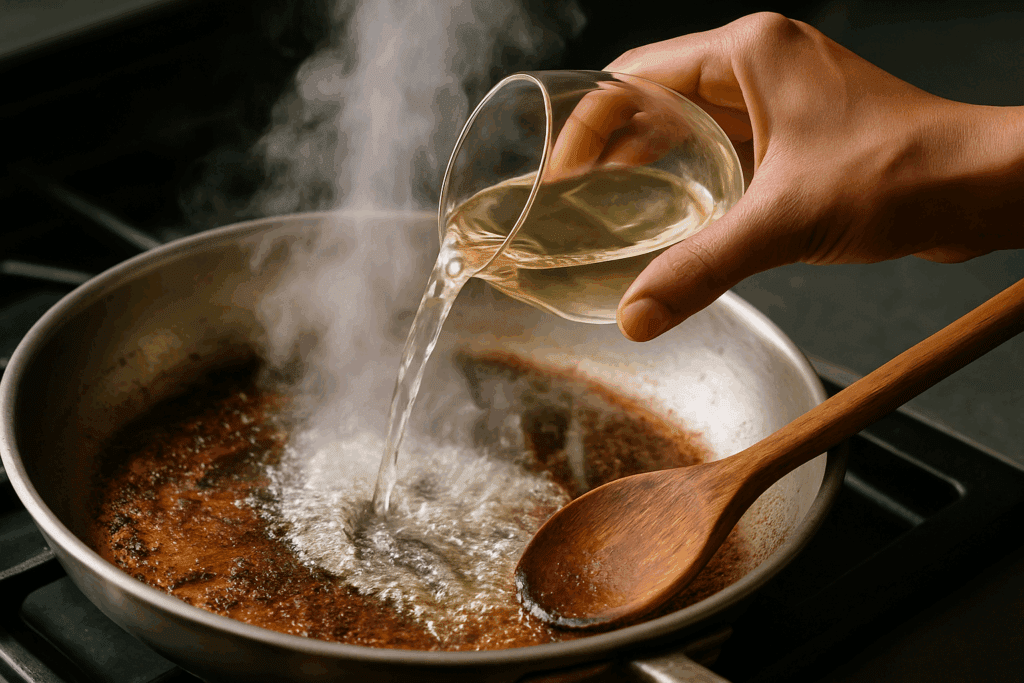
Ready to master the deglaze technique? Here’s the easiest way to deglaze a pan:
- Sear or Sauté: Cook your meat or veggies over medium-high heat using an All-Clad D3 12-Inch Stainless Steel Fry Pan or Lodge 10.25-Inch Cast Iron Skillet until those caramelized bits form. This is where the flavor lives!
- Clear the Pan: Remove the food, keeping the pan on medium-high heat. The fond is ready for its moment.
- Add Liquid: Pour in a splash (about ¼ to ½ cup) of your chosen liquid—wine, broth, or vinegar. It’ll sizzle like a culinary symphony.
- Scrape and Swirl: Use a wooden spoon to scrape the fond. Simmer for 1-2 minutes to deglaze vs reduce, creating a glossy, flavor-packed sauce in a stainless steel saucepan.
- Optional Glow-Up: Swirl in butter, fresh herbs, or garlic for extra richness.
It’s giving restaurant, but make it weeknight at home! Can you believe all that goodness was hiding at the bottom of your pan, waiting to be scrubbed and washed away?
Everyday Recipes You Can Upgrade with Deglazing for Gravy or Sauce
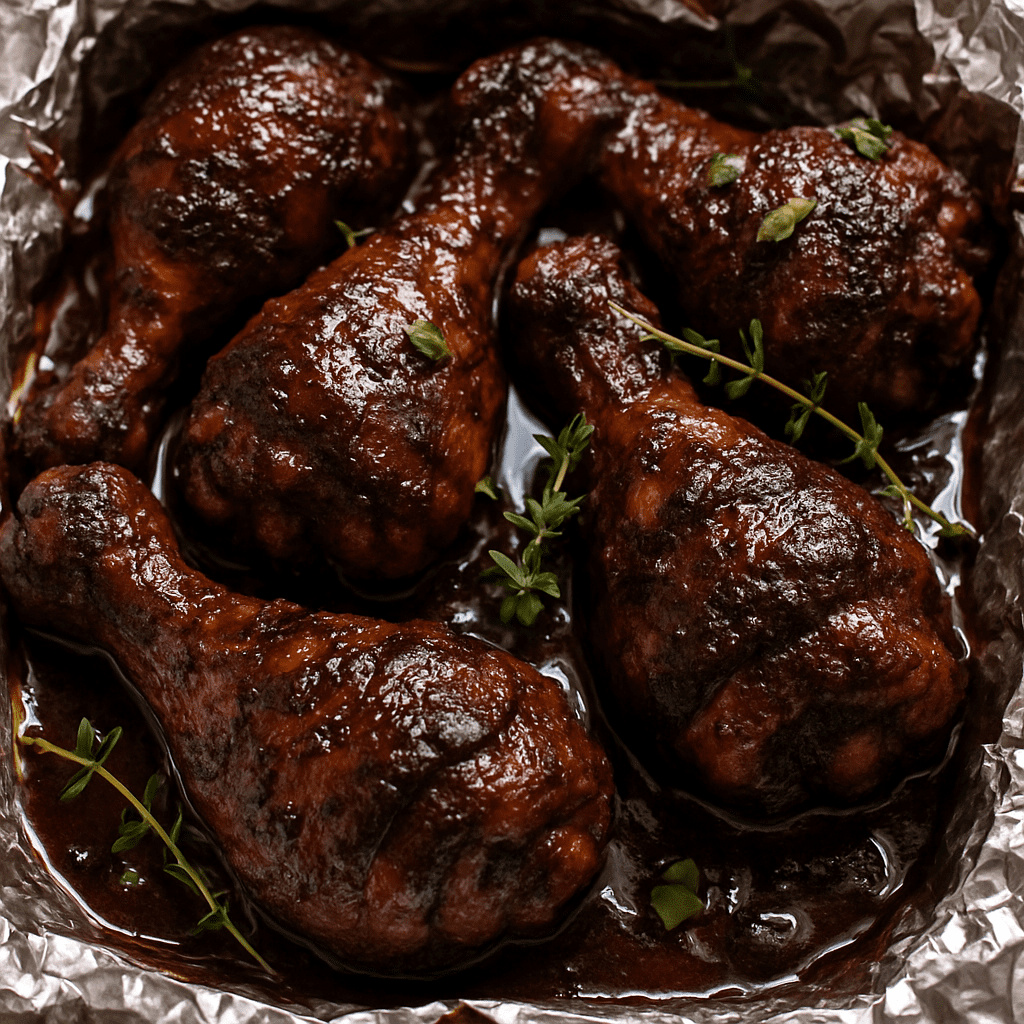
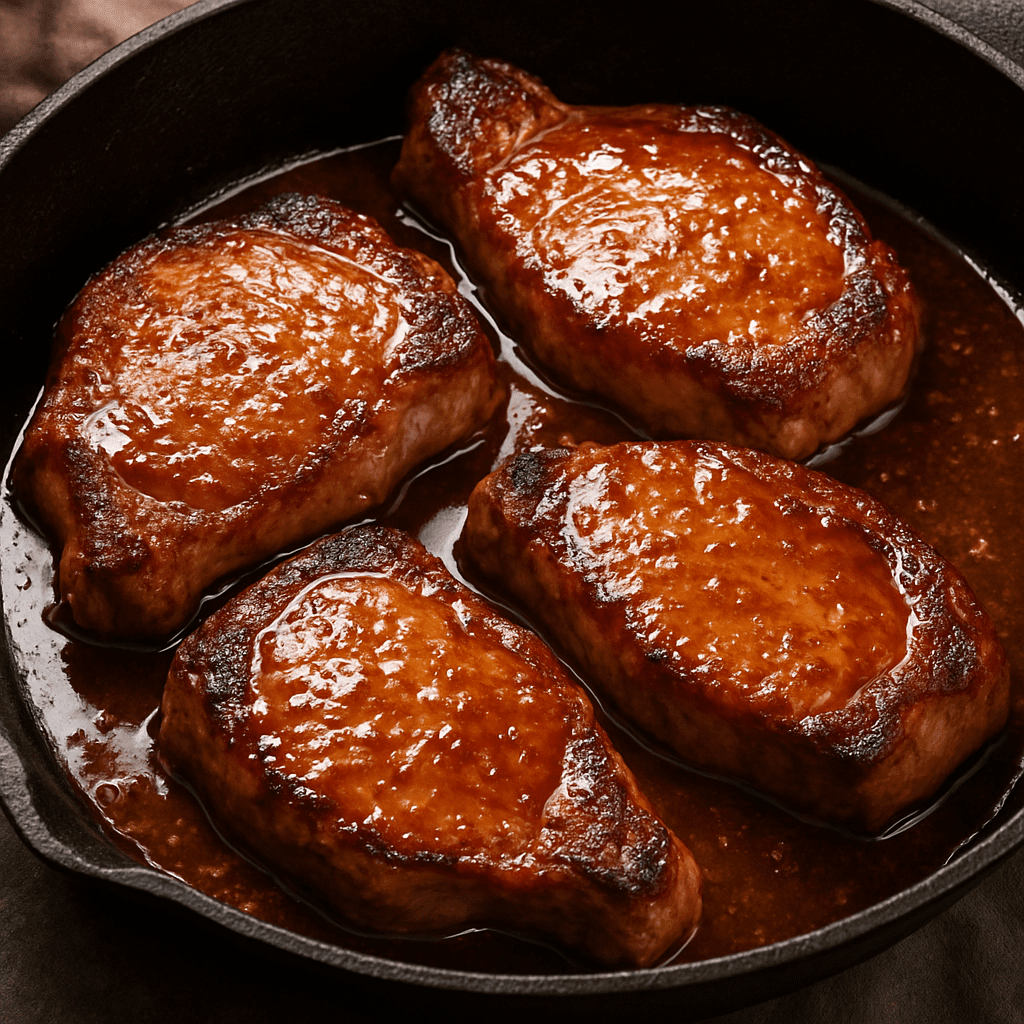
Don’t save this trick for special occasions. Use it to upgrade your weeknight staples:
- Pan-Seared Chicken Thighs: Sear until crispy in an All-Clad D3 12-Inch Stainless Steel Fry Pan, deglaze a pan with white wine and thyme for a silky, herbaceous sauce. A weeknight winner.
- Sautéed Mushrooms: Cook until golden, then deglaze with sherry or veggie stock for an earthy, umami-packed side.
- Pork Chops with Apple Cider Glaze: Sear chops in a Lodge 10.25-Inch Cast Iron Skillet, deglaze with apple cider and butter for a sweet-tangy glow-up.
- Chef Samantha’s Jerk-Spiced Drumsticks with Rum Reduction: Marinate drumsticks with my jerk seasoning, sear, and deglaze a pan with rum and brown sugar for a Caribbean flavor explosion.
Tools That Make Deglazing Cast Iron or Stainless Steel Easier
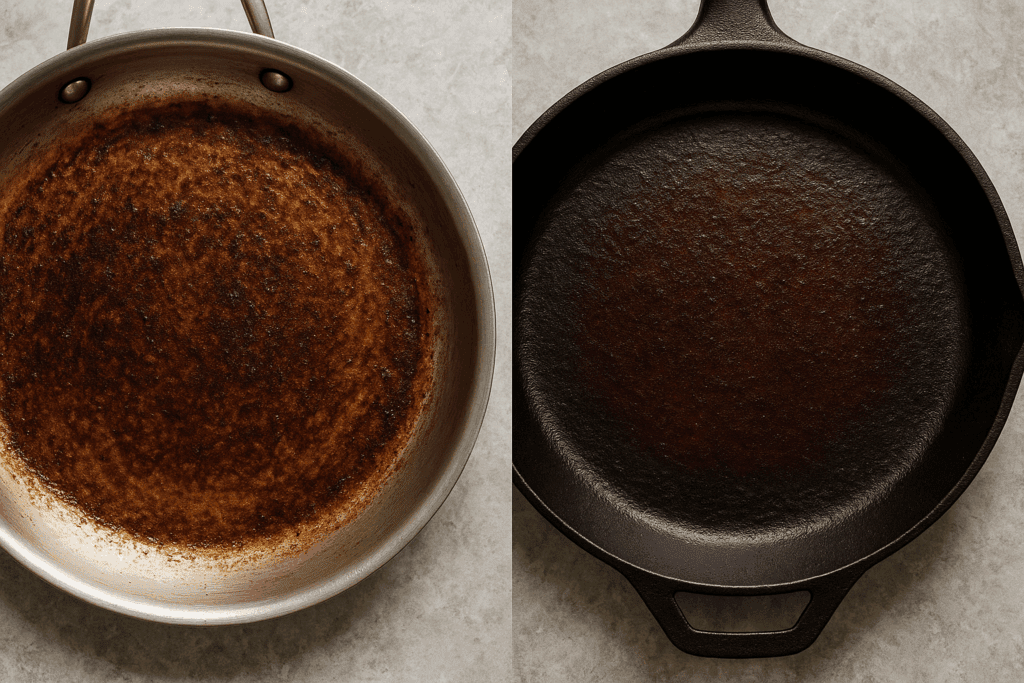
You don’t need a fancy kitchen, but the right kitchen tools for deglazing make it seamless:
- Best Pans: Deglazing stainless steel with an All-Clad D3 12-Inch Stainless Steel Fry Pan or deglazing cast iron with a Lodge 10.25-Inch Cast Iron Skillet is ideal—they create fond effortlessly. Can you deglaze a ceramic pan? Yes, but non-toxic cookware like stainless or cast iron works best.
- Wooden Spoon or Flat-Edge Spatula: Essential for scraping fond. My KitchenAid Gourmet Beechwood Spoon is a workhorse.
- Optional Thermometer: A ThermoPro Infrared Instant Read Thermometer ensures your pan’s hot enough for searing meat (around 350°F). You don’t need this – it’s overkill, but hey, it works!
Is deglazing bad for the pan? Not at all—it’s safe for cast iron cooking or stainless steel if done right. Check out my full gear list for more faves!
Common Deglazing Mistakes to Avoid
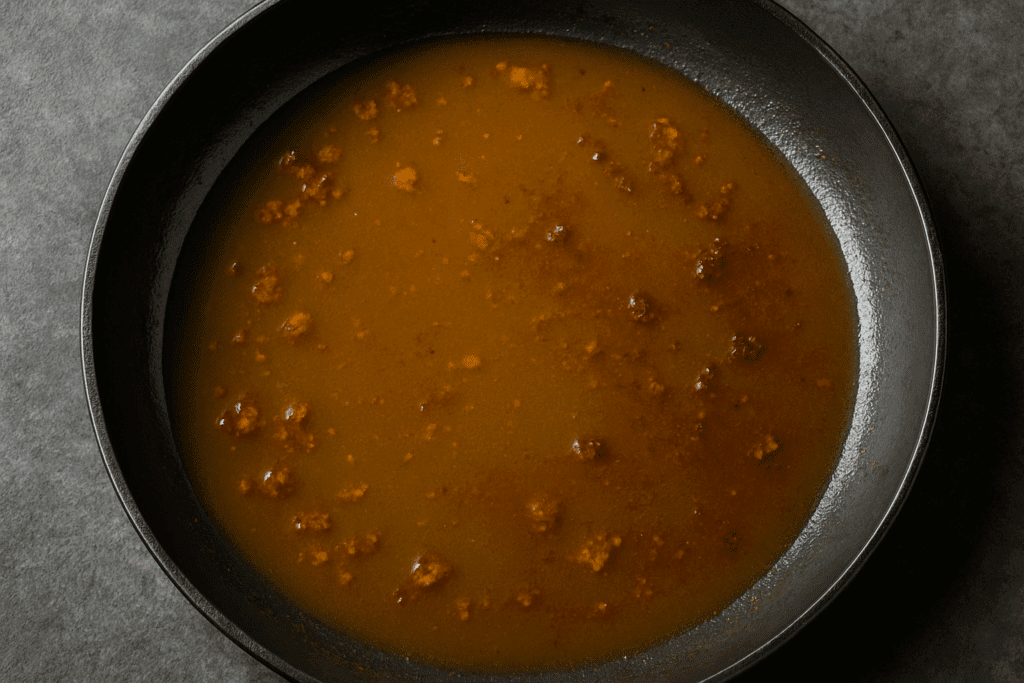
Too much liquid results in a thin sauce with lots of clumps
Alright, confession time. I’ve messed up deglazing a pan more than once. So learn from me:
- Too much liquid = thin sauce. Just a splash guys.
- Pan not hot enough = no sizzle. Warm it up.
- Adding too early = no fond. Let those bits brown first.
- No seasoning after = bland. Always taste and adjust.
Also, can you deglaze a ceramic pan? Technically yes. But it’s not ideal—it doesn’t build flavor like metal pans.
Don’t worry if you mess up—just try again. That’s how kitchen confidence grows!
How Deglazing Fits Into Your Busy Kitchen
You don’t need hours. You don’t need recipes. Just:
- Time-saving: Adds depth to dinner in 3 minutes flat.
- Versatility: Works with meat, veggies, even tofu and grains. (Alternatives for deglazing abound!)
- Empowerment: No fancy tools, no culinary degree—just you and your skillet.
It’s cooking at its best—fast, flavorful, and flexible. Honestly, once you try it, you won’t stop. It’s one of those home cooking hacks that sticks.
So next time you’re standing over a hot pan thinking, “Ugh, now I gotta scrub this?” — don’t. Deglaze it. Pour in that splash, scrape it up, and taste the difference.
Chef Sam’s promise? You’ve got one more cooking technique to release sensational flavors. You already know!
Conclusion
Deglazing is the flavor-enhancing hack you didn’t know you needed. With a quick sizzle and scrape using a KitchenAid Gourmet Beechwood Spoon, you can turn everyday ingredients into tender, juicy, caramelized masterpieces. From pan sauce tips for chicken to deglazing for gravy with pork chops, this technique empowers you to create bold, unforgettable meals in minutes. Grab your All-Clad D3 12-Inch Stainless Steel Fry Pan or Lodge 10.25-Inch Cast Iron Skillet, pick a liquid, and let your kitchen sing with sensory cooking. Try one of my recipes tonight, and watch your family light up. Let’s make dinner a flavor bomb—you already know!

